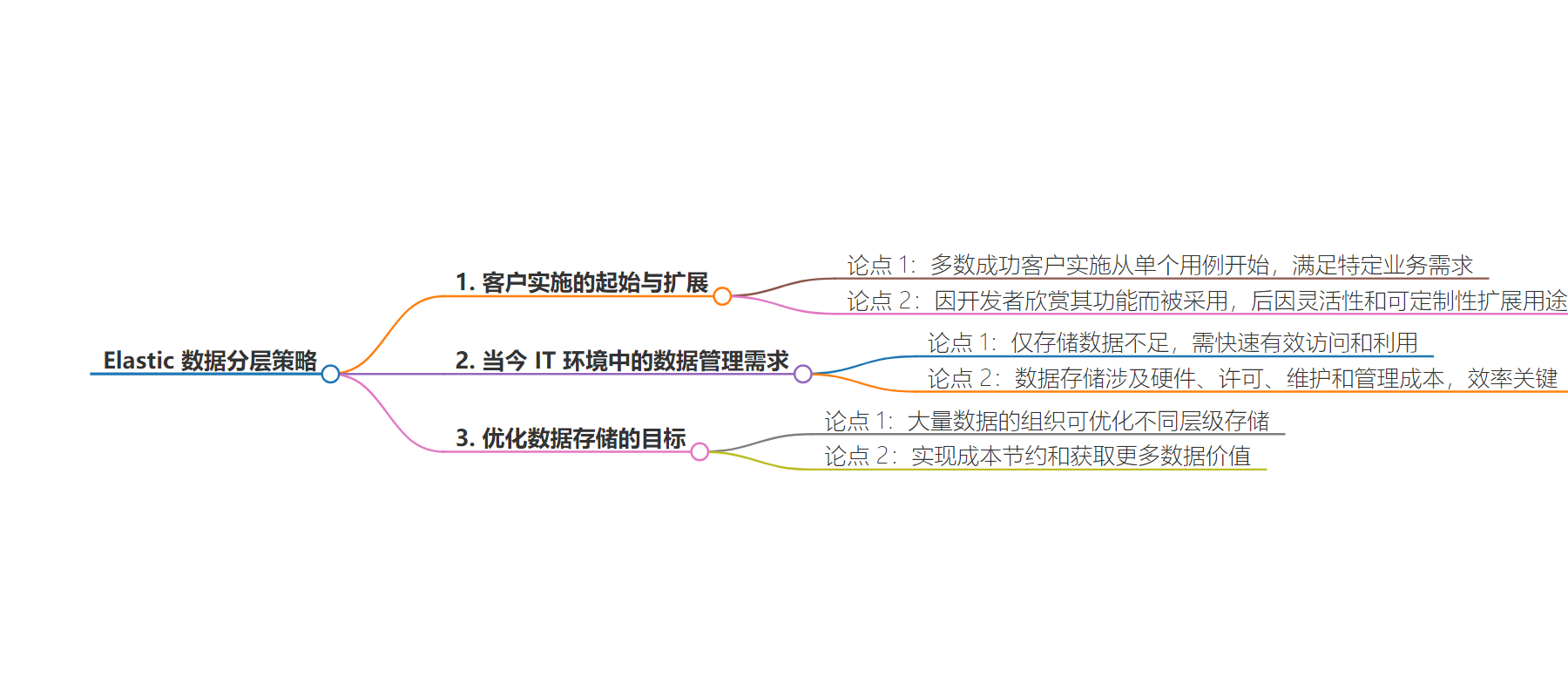包阅导读总结
1. 关键词:Elastic、Data Tiering、Efficiency、Cost Savings、Value Derivation
2. 总结:本文指出 Elastic 成功的客户实施通常始于针对特定业务需求的单个用例,因其灵活性被广泛采用。强调在当今 IT 环境中,仅存储数据不够,要高效管理,文章将阐述拥有大量数据的组织如何优化存储以节省成本并获取更多价值。
3. 主要内容:
– Elastic 的多数成功客户实施始于解决特定业务需求的单个用例
– 由于其特性,客户常扩展其用途,如用于多种需求场景
– 在当今 IT 环境,存储数据还需能快速有效利用,数据管理效率关键,因存储有成本
– 本文将介绍拥有大量数据的组织如何跨不同层级优化存储
– 以实现成本节省
– 从数据中获取更多价值
思维导图:
文章地址:https://www.elastic.co/blog/elastic-data-tiering-strategy
文章来源:elastic.co
作者:Michael Calizo,Tim Lee
发布时间:2024/7/22 14:04
语言:英文
总字数:1771字
预计阅读时间:8分钟
评分:88分
标签:数据分层,Elasticsearch,成本优化,数据管理,合规性
以下为原文内容
本内容来源于用户推荐转载,旨在分享知识与观点,如有侵权请联系删除 联系邮箱 media@ilingban.com
At Elastic, most of our successful customer implementations begin with a single use case aimed at addressing specific business requirements. Elastic is often initially adopted because developers appreciate the features it offers. However, because of its flexibility and customizability, customers tend to expand their adoption to address various needs, such as logging and application performance monitoring, SIEM and security operations, and even more complex search use cases utilizing the data already available in Elastic.
In today’s IT environment, merely storing data (logs, traces, metrics, and documents) is insufficient. Organizations need a solution that enables their teams to access and utilize this data quickly and effectively. Efficiency is key in data management, as every bit of stored data incurs costs for hardware, licensing, maintenance, and management.
In this blog, we’ll break down how organizations with large amounts of data can optimize how it is stored across different tiers to gain cost savings and derive more value from their data.
